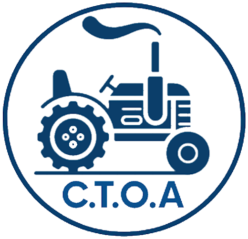Forum Replies Created
-
AuthorPosts
-
Guys one last question. I've everything ready to go but am wondering about a fuse. The original primary wire to the glow plugs which will now activate the relay is fused in the fuse box with a 20 amp fuse. Should I be putting one inline from the starter solenoid lug to the input of the relay?
Thanks
I guess what I meant to say was the pto shaft was splined on both ends and thus seems as though there is no safety mechanism for a jam (rock,log,etc..) which gets caught up in the rototiller blades. The way I see it either the engine stalls or there is serious mechanical failure somewhere. So should I install a slip clutch??
Thanks
Thanks, brought my fill plug home and pulled off the breather. Do you know what the thread size is for the breather stem in the top of the fill plug. I got a small 1/4 inch male flare fitting to screw in nicely, but seems strange.
Bill
Seems like we have gotten down to semantics here, this is what I was looking at as a reference. When I was a kid we had an old Saab that you pullled a lever on the dash which pulled a cable and manually closed the contacts on the starter selenoid energizing the starter and pinon gear. Its all good, I will hook up what I got and see what happens.
Thanks
Automobile starter solenoid
Main article: Starter solenoidIn a car or truck, the starter solenoid is part of an automobile starting system. The starter solenoid receives a large electric current from the car battery and a small electric current from the ignition switch. When the ignition switch is turned on (i.e. when the key is turned to start the car), the small electric current forces the starter solenoid to close a pair of heavy contacts, thus relaying the large electric current to the starter motor.
Starter solenoids can also be built into the starter itself, often visible on the outside of the starter. If a starter solenoid receives insufficient power from the battery, it will fail to start the motor, and may produce a rapid 'clicking' or 'clacking' sound. This can be caused by a low or dead battery, by corroded or loose connections in the cable, or by a broken or damaged positive (red) cable from the battery. Any of these will results in some power to the solenoid, but not enough to hold the heavy contacts closed, so the starter motor itself never spins, and the engine does not start.
So I went to the auto store today and got a starter solenoid switch with adequate amp rating. Speaking to the tech support guy at the manufacurer he said since this is not continuous rated that energizing for 20-30 seconds may burn it up, he suggested continuous duty model. Any thoughts.
Thanks
I get the picture literally and figuratively. Just to clarify you are really using a solenoid though right? All the relays I have looked at have dinky wires and connectors, where as the solenoid have post to bolt down a connection. Whole thing makes sense, small wire to energize big switch and big wire.
Thanks
tractor is 2009, sat until i got it in fall2011, the battery was poor and i replaced it. the primary wire does look wimpy, i will replace it. can you be more specific about the relay
thanks
-
AuthorPosts
